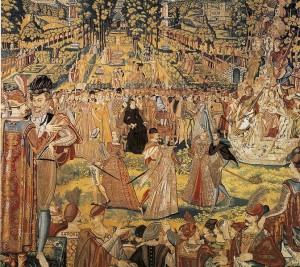 I’ve really enjoyed the posts this month – the insights into the history and motivation behind why we’ve all chosen such a difficult, time-consuming, and not-yet lucrative focus for our time. This month provided a rare opportunity for self-reflection, for looking back, and for reminding myself why I enjoy writing so much.
I’ve really enjoyed the posts this month – the insights into the history and motivation behind why we’ve all chosen such a difficult, time-consuming, and not-yet lucrative focus for our time. This month provided a rare opportunity for self-reflection, for looking back, and for reminding myself why I enjoy writing so much.
I love a good story.
It all boils down to that. As early as third grade, I began devouring books way above my grade level in search for great stories. I read widely, but gravitated toward science fiction and fantasy, reveling in foreign worlds, alien technology, and boundless magic. Many of the great stories mentioned this month are ones I enjoyed too, but I thought I’d mention a couple of other favorites from my early days as an avid reader.
First there’s the classic Sword of Shannara, epic fantasy from before it was clear what made classic epic fantasy. It’s one of the early greats ones. It had everything: the mysterious, powerful mentor; the young hero hopelessly in over his head; the faithful sidekick; the experienced fighter friend; and an ancient evil no one really expected anyone could defeat. It also included spectacular battle sequences, terrifying monsters, magical talismans, and memorable moments of wonder and horror. What’s not to love? Many of the sequels were good, but for me, none of them surpassed the parent story.
Another of my all-time favorite series was The Mallorean by David Eddings. The magic system was fairly simple, yet consistent, and the world well-developed. Most importantly, the characters were awesome. I loved how they interacted, how they each had a distinct voice, how even the minor characters had some interesting arcs, and important roles to play. For me, this was a series that showed how to manage and utilize a big cast of characters.
There are many other stories I still cherish to this day, but these are a couple of classics that helped cement my love of fantasy. I read so much, it became a problem in school and at home. However, it wasn’t until I started role-playing games that I really started recognizing I had a talent for spinning my own tales.
As a youth, I played a spin-off version of D&D with brothers and friends that minimized the use of dice (everything was done with a single die), and focused more on the crafting of great adventures. Through that effort, I soon discovered I had a flair for inventing great stories, for adapting quickly on the fly, and holding a group’s interest.
It was about that time that I started writing my own stories in earnest. In high school, I plotted out a couple of complete novels, although I never finished writing any of those ginormous epics. I wrote many short stories, some of which were actually pretty good. At that time, I knew I wanted to be a writer, to craft long, epic tales that would thrill me, and hopefully a few readers too.
Unfortunately, I went to college and fell in love with computers, which were just becoming mainstream, and shifted focus to become a computer programmer. That’s what became my career, what supported my family for over a decade until the desire, the need, to write began consuming me again.
Now I write as much as I can, and I’ve arranged my schedule to allow more time to write. I’ve written and thrown away well over half a million words, and have completed three novels and a novella that are viable properties. It’s a long road to become a competent writer, but it’s a road I’ve loved. Soon I hope to reach the next big milestone: publishing something, but that’s a different topic.
And I still play role-playing games, now with my kids and their friends. I still find it one of the best ways to exercise my creative muscles, to keep my mind sharp, nimble, and focused on what’s important in stories. It helps me stay in tune with what makes stories fun.
Because a fun story is a good story.


